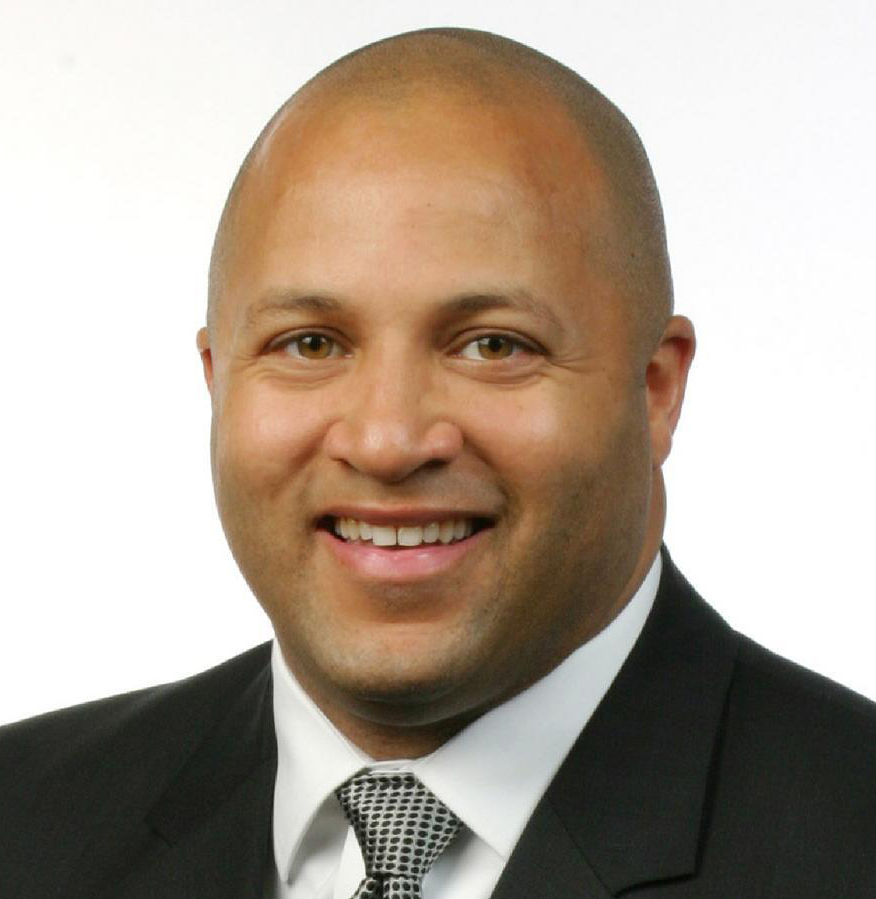The Big Question: Creating succession-ready leaders
People + Strategy asked: What are the top factors in creating succession-ready leaders, and how good are we at delivering on these factors today?

Executives Must Create the Leaders to Fill Their Shoes
What are the top factors in creating succession-ready leaders, and how good are we at delivering on these factors today?
People + Strategy put this question to a CHRO, a former CEO who experienced the succession process first-hand and an experienced multiple-time board director who has seen this question from both the board and CEO sides of the table. Here are their responses.
The 5 Factors of an Effective Succession

Healthy cultures can take time to build. A need for continuity is too often underestimated. If a board chooses to go with an external candidate for their next CEO, they should regard the succession process as a failure. And given that the board is ultimately responsible for the succession process, the failure is theirs. They need to own it. In my experience a great succession process requires the following five factors:
1. The current CEO needs to feel responsibility for creating his own succession.
A good CEO should be working with their board to identify talent and to give them the experiences required to qualify for the top role. This sounds easy but it doesn’t often happen. It is easier to identify those CEOs that remove potential successors (seen as threats in their eyes) than it is to identify CEOs who do this well. Three to five years in advance of a planned succession, the incumbent should be developing three to five diverse candidates so that the board has a choice to make from a healthy bench of qualified candidates. Ideally this bench may include external talent that has been identified and brought in to supplement the internal bench.
2. Succession candidates should be required to spend time exploring why they want the top job. They need to discover their visceral personal purpose.
The CEO role is unlike all other roles, and a lazy assumption that everyone should want the top job can be dangerous. There are many healthy reasons for wanting to become CEO, but sadly some unhealthy ones too. It is important that this is fleshed out early in the succession process. If one or two of the chosen candidates drop out as a result of this introspection, consider that a good thing.
3. The board needs to be prepared to give all candidates the opportunity to acquire the experiences necessary for the top job.
This requires an appetite for risk, as it may require the board to ask succession candidates to acquire new skills or experiences, often preferring them to other candidates with a more complete “ready now” skill set for a given role. Think of this as an investment in the future. All candidates should be given the opportunity to complete their apprenticeship.
4. Ensure that the chosen succession candidates are supported through the process.
With a settled bench of succession candidates, work hard to ensure that all the candidates feel supported through the process. And to be clear, I am not saying “are supported,” I am saying “feel supported.” The candidates will determine whether the support they are getting is appropriate, not the HR function or the board. I know from personal experience just how gruelling and sometimes demoralising a succession process can be. The process can feel like an attempt to discover every possible weakness and vulnerability—or every reason NOT to appoint a candidate. Whilst candidates will usually understand the logic for this, the emotional energy required to sustain oneself through the process should not be underestimated. Make sure they feel supported.
5. Ensure there are medals for silver and bronze.
A winner-takes-all approach to succession can be a tremendous waste of talent. Keep a dialogue going with all candidates about what they would like to do if they are not successful. You need to be realistic—some will almost certainly want to leave for new pastures if they are not the successful candidate. However, a little care and attention can help maximize the chances of retaining those in the silver and bronze medal positions, sometimes with the creation of new roles and learning experiences that serve to benefit the entire organization.
How often do we see all five factors work effectively? Not often enough! Boards and the executive can find it too easy to get caught up in the urgency of “now” and lose focus on the long-term needs of the business. This can be particularly true for large organizations.
The best CEOs understand the temporary nature of their role as stewards of the business they have the privilege to lead. This understanding helps them find the energy to work with the board to ensure that the five factors for effective succession are present. When this happens, we should acknowledge the accomplishment and celebrate the outcome.
Leaders Create Leaders, Not Just Results

Earlier in my career I had the opportunity to attend a debrief meeting on a sovereign wealth fund (a state-owned fund that invests substantial amounts of money globally on behalf of their country). What intrigued me most were the two fundamental characteristics they prioritized in companies they invest in: the quality of earnings and the quality of their leadership team.
I was reminded of this same pattern in the autobiography of legendary Georgetown basketball coach John Thompson. Two fundamental leadership characteristics permeated his life and legacy. First, leaders get/drive results, and second, they develop other leaders. As we steward succession planning and assess our executive pipelines for the C-suite of the future, I continue to challenge myself and others to find anything that doesn’t fit inside of these two categories.
Many would agree with my assessment, but the larger question is, does that mindset truly exist in your company? Companies that focus on succession think and plan in terms of horsepower, whereas companies that don’t have that mindset focus more on manpower. Succession is a major determinate of the vitality of the organization and that translates into a vibrant, growth-oriented and intrapreneurial culture.
Recently, I delved deep into succession with the board and discussed how we could and should develop a more robust talent bench. Again, everyone understood the fundamentals but developing great talent must pass the calendar test: Where do leaders spend their time?
- Plan a three-to-five-year strategic succession landscape. The future outlook should clearly inform the current planning. Diversified skill acquisition is the cornerstone of development and having an active, future-oriented playbook allows for better planning and more fluid movement. This also drives the right conversations with those nearing retirement, providing pathway roles and identifying enterprise talent who are hungry to understand their future. A clear understanding of the future helps to better clarify current succession needs.
- Leaders must OWN succession. I often hear rhetoric that HR owns succession—that is a recipe for disaster. High-performing teams have leaders that spend time developing their bench and I tell leaders that their movement is dependent on developing a successor for their role. Robust succession planning gives leaders one thing back that you can’t put a price on and that is capacity! The organization’s ROI increases exponentially when the caliber of talent becomes a top priority. Owning succession also means being honest and open about performance and recognizing the importance of frequently letting people know how they are doing.
- Succession is strategic. Succession has a language and a process. Often, I see names on a page to fill charts with limited thought on skill development and readiness. The language of succession must be clear on readiness and willingness because someone could be ready for a role but not willing to move or change to advance their career. It is also important, especially for enterprise talent, to signal expectations early as these folks move into new roles. The narrative is important because we all expect the person to be successful—thus the move—but we also need to ensure that the role frees up in the future for other talent. Sometimes a person’s ambition outweighs their substantive contribution in their role, and they get focused on moving up versus broadening their skills. This is a major succession default and a system failure. Succession must be a living and ongoing process—when done well, it energizes the talent in the business. Think of great succession planning as chess, where you have to think several moves ahead to be successful.
- Succession is revealing. Gaining alignment on talent can be challenging at times, especially if the process happens only once a year, which is not what I recommend. Bringing leaders together to discuss and align on key talent and the critical succession roles makes the process more fluid and sustainable. This is important because one succession move can have major implications on the retention of others in your organization. Knowing those implications upfront allows for better planning and more time to address any retentions issues that might arise. When succession is working, you will have several individuals who are ready or ‘stretch ready’ for the critical roles in the business. You will also have the time to complete a succession risk analysis long before you actually encounter the risk.
Having the right people, with the right skills, in the right place at the right time is a signal that the succession process is working. Having a strong pool of diverse talent to select from also enhances the process, building a richer culture that embraces the strength of our differences. Investors seek sustainable organizations, and well-orchestrated, fully integrated succession is a sustainable advantage. When Coach Thompson looked back at his life, his legacy was the leaders he developed. Leave that same mark in your organizations!
Succession Planning Is Talent Management

Much like the rest of the world, I was enthralled by this summer’s tremendous Olympic athletes. While watching the relays in swimming and track, the thought struck me that relays are such apt metaphors for succession planning. Is the person who is up next to receive the baton or to dive into the pool trained and ready? Will they get the handover and the timing right? Are they capable of extending the lead or catching up with the competition? Unlike training for an Olympic relay, planning for succession is not always made a priority in core business strategy. Instead, we as boards and management can too easily neglect or avoid hard conversations about succession while competing priorities take precedence.
CEO turnover has accelerated over the years, but in 2020, the velocity was made clear when McKinsey reported the average CEO tenure at a large-cap company is roughly five years. That is five fewer years than the ten-year average tenure reported in 1995.1 Each year 10-17% of corporations appoint a new CEO, according to Forbes.2 Yet ongoing research undertaken by the Association for Talent Development shows that only one-third have a formalized successionplanning process.3
However, it would seem that even those who do undertake succession planning aren’t reaping the rewards they hope.
Corporate Executive Board research from 2017 shows that while 66% of companies invest in leadership development programs, only 24% of leaders consider them to be a success.4 Only one-third of the executives who told Korn Ferry in 2015 that their companies do have such a program were satisfied with the outcome.5
So how can you make succession planning work successfully for your business?
Talent Development
Focusing on nurturing our existing internal high-potential talent is the fastest and most successful route to developing top leaders. How do we craft a more personal, interactive and successful framework in which to foster our best and brightest and shepherd them to success?
If we are constantly readjusting our strategy, we will always be aware of our key leadership roles and mindful of what talent profiles (expertise, experience, knowledge, skills and attributes) are needed for individuals to excel in these roles.
Then, taking a structured approach is a sure-fire way to measure the effectiveness of your talent development program: Establish clear goals, timelines and metrics for success; identify high potentials; understand their capacity for growth in key competencies (those competencies that are most crucial for the businesses’ own challenges and goals); provide professional development opportunities, key experiences and support needed to succeed; and benchmark progress for accountability.
We all need strong role models for personal development. I have often used a three-pronged plan for development to breed the most positive outcome.
- Top-down development. My experience has been that great succession planning comes as a priority of the CEO. The most successful CEOs pay a great deal of attention to and spend time with high potentials. Not only their own time, but great leaders ensure that high potentials have resources within the business to mine experience, advice and perspective.
- Sponsors. By giving high potentials sponsors within leadership, these individuals will have a dedicated advocate and gain access to networks of influence within the business.
- External mentors. As countless leaders have shared, the closer you get to the top, the lonelier it gets. Having access to experienced external mentors to foster the development of these individuals is incredibly valuable as they shape their leadership skills.
High potentials also need opportunities to close the gap between their current competencies and development potential. By giving high potentials the right development opportunities, including job rotations and promotions for which they might not yet be completely qualified or in which they have limited experience but that fit their growth maps, you can leverage existing experience while nurturing new skill sets. A 2017 survey of 823 highly successful senior executives conducted by Egon Zehnder revealed that the vast majority considers stretch assignments and job rotations to be the most important way to accelerate a career.6
Finally, let them fly. We can be hesitant to let superstars exit our team to pursue other roles within the business. Encouraging this, from the top down, ensuring that all have the best interests of the company as a whole, rather than their individual team, in their sites, is critical to allowing high potentials to flourish within your company.
Map the Market
External appointments at the top and within your succession pipeline are likely to continue to happen as people switch jobs and employers more frequently. Research from the Corporate Executive Board in 2017 shows that, in the world’s largest corporations, 30 percent of new CEOs are hired from the outside.7
Most leaders are aware of the high costs of employee departure—searches are draining on both time and resources. Businesses can be strategic and proactive in recruitment rather than commission one-off reactive searches. Which leads me to the dreaded ‘networking’—I get a rash when I hear this word. But, in its best form, networking is simply understanding who is out there; who has which skill sets, strengths and talents; and who could potentially be a strong fit for your business. If both executive leaders and HR teams are familiar with the rising leaders in the market, they can match this talent with future key roles within the business. Engaging with resource groups is a great way to stay abreast of the top performers in the market.
Ensure you understand the market on a global, not simply local, scale. The right person may currently be halfway around the world but that shouldn’t stand in the way of their potential future leadership success within your business.
This pandemic has shown us that agile businesses have the best chance at success—businesses that can move quickly to adapt to a changing environment and future-proof, understanding that circumstances can turn in an instant. To meet these demands of an ever-evolving market, cultivating leaders with a variety of styles and skills who can build a strategy and bring a team together to implement is a path towards success. Not only is it exhilarating to nurture our future leaders, but putting succession planning at the heart of our talent management strategy makes good business sense.
References
- McKinsey.com 5/2020
- Forbes.com 4/8/2021
- TD.org
- CEBGlobal.com 2017
- KornFerry.com 2015
- EgonZehnder.com 2017
- CEBGlobal.com 2017
An organization run by AI is not a futuristic concept. Such technology is already a part of many workplaces and will continue to shape the labor market and HR. Here's how employers and employees can successfully manage generative AI and other AI-powered systems.



